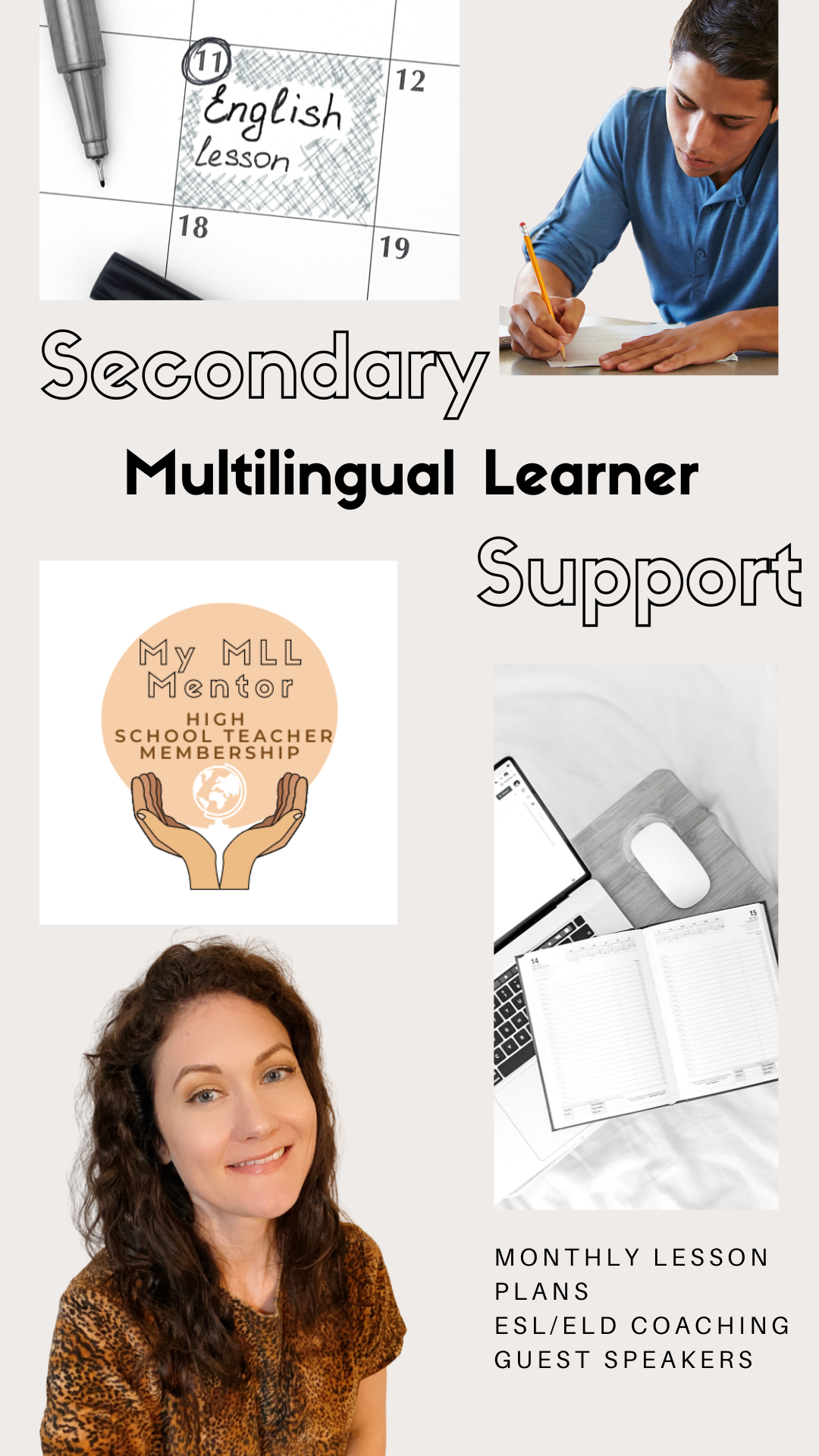|
I got to meet with Dr. Katie Toppel this morning about using sentence pattern charts on Instagram Live and there were so many a-ha moments from our brief conversation that I knew I'd have to write them down! So I thought I'd round them up here for others to see as well.
But first, if you don't know Dr. Toppel (especially if you teach elementary), she is a wealth of information and shares so much on Twitter and Instagram. I teach high school ESL and I still get so much out of her sentence pattern practice and lesson plans she posts. She's also got a book coming out this year that she co-authored with Tan Huynh and Carol Salva. And if you follow #EllChat_BkClub, she is one of the co-authors. If you aren't familiar with the sentence patterning instructional strategy, it is a great tool to get students developing sentences through content (which is something we always want to do!). It involves using a chart with a different part of speech for each column and also color-coding them to help students identify them. Different structures can be used and it can be adapted for different proficiency levels and grades. Here are some of my key takeaways: It's extremely versatile. Yep, it can be used with any proficiency level and any grade. The structures you use can be as simple (subject-verb) or as complicated as you want (article-adjective-subject-verb-adverb-prepositional phrase). There are 7 basic sentence patterns, so you can start off with one of those. If you start off simple, you can use that as your base and build on it either together with students or have them enter their own ideas. Katie mentioned that you don't want to keep it as just choosing words, but having them use their own ideas from the content they have learned with you. It's a great way to show higher-order thinking. Instead of having students just choose words and copy them into sentences (which may be needed for lower proficiency level students at first), have them write their own information. This may be them adding in their own ideas to a prepositional phrase or by adding in a blank with a line that signals which part of speech you are looking for. For example, draw or insert a red line if you are looking for a noun. I would suggest that whatever system you use for color-coding, let them know ahead of time and keep it consistent. It spices up our grammar instruction. I think one of the biggest questions I get from newer teachers I coach is how to teach grammar. Nobody wants to hand out worksheets. Nobody wants to drill and kill, but sometimes we think it's necessary. Sentence patterning is a way to practice grammar while discussing content and parts of speech. For example, if you are talking about past tense verbs with "ed", you can have students construct the verbs with their suffix. If you are discussing "ing" with the present progressive, they can practice using this suffix as they write their verbs too. Similarly, if you are discussing commas or semicolons, you can ask students where these might go in the sentence and discuss the rules that go along with these. The possibilities are really endless! You can use it as a foundation to spring-board from (or even an assessment). One of the biggest takeaways for me was that the strategy doesn't have to end when the sentence is complete. You can use the sentences as a starting point for your lessons and even as an assessment. Maybe you are going to talk about figurative language and you are using your sentence structures to make examples of these. Maybe then you continue on with your figurative language lesson more or you start reading a text you are working on. Or maybe you have finished up your reading and you want students to show their understanding in a sentence pattern chart using that specific figurative language. I'm telling you, the ideas are endless! Make sure you go and give Dr. Toppel a follow and watch a video with her going into more depth on the topic here. Please share any takeaways you gleaned in the comments! To learn more about strategies for incorporating language into your lessons, check out my course, My EL Mentor: Creating a Language-Rich Classroom!
0 Comments
Leave a Reply. |
AuthorI support middle and high school teachers through monthly lesson plans, coaching, and guest speaker offerings in our Secondary ESL Teacher Membership. Archives
April 2023
Categories
All
|


 RSS Feed
RSS Feed
